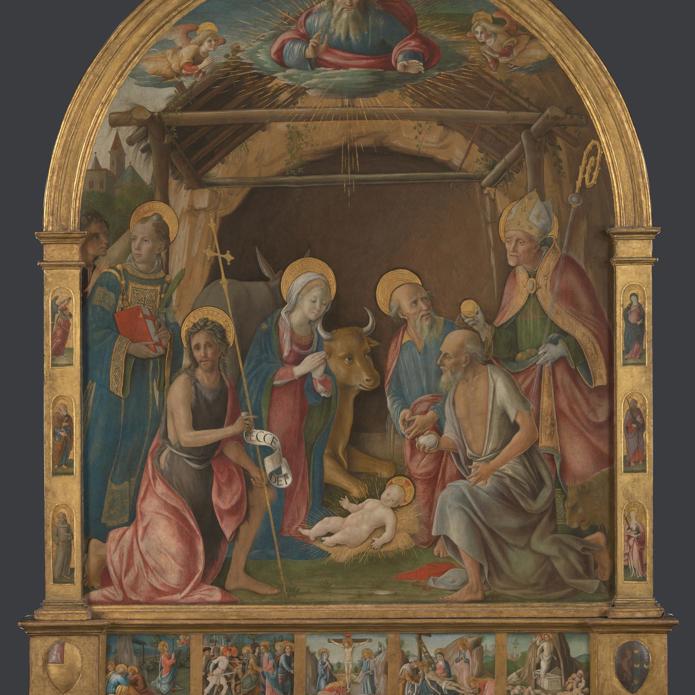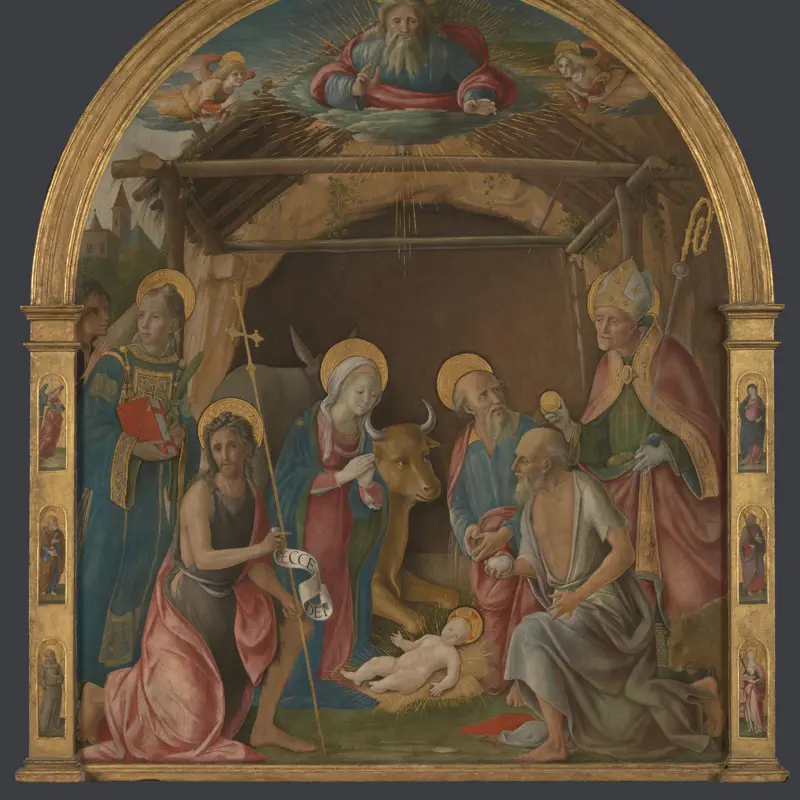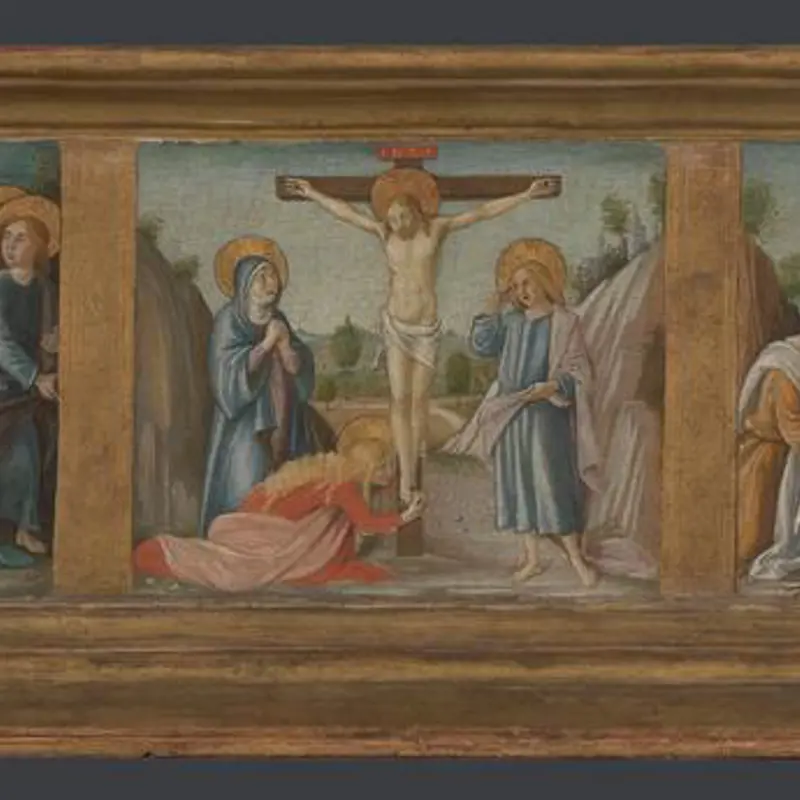Pietro Orioli, 'The Nativity with Saints', probably about 1485-95
About the work
Overview
The Christ Child, naked but with a gilded halo, lies on a bed of straw. Golden rays shoot out around him. Kneeling around Christ in adoration are his parents and four saints. God the Father appears above, and more saints stand in the pilasters to the sides of the main scene. On the far left the face of one of the shepherds is visible peering around the frame.
This is the main panel of an altarpiece by Pietro Orioli, and in it we see his interests in spatial depth and naturalistic representation that set him apart from many of his Sienese contemporaries. He has set the story in a believable landscape, with blue sky above and trees and buildings in the distance; the frame of the roof recedes along diagonals and the composition is carefully structured around an underlying geometry. The saints, chatting casually, have a variety of gestures and expressions quite different from the graceful but more static figures of much late fifteenth-century Sienese painting.
Key facts
Details
- Full title
- The Nativity with Saints
- Artist
- Pietro Orioli
- Artist dates
- 1458 - 1496
- Part of the group
- The Nativity with Saints Altarpiece
- Date made
- Probably about 1485-95
- Medium and support
- Egg tempera on wood
- Dimensions
- 187.5 × 155 cm
- Inscription summary
- Inscribed
- Acquisition credit
- Bought, 1901
- Inventory number
- NG1849.1
- Location
- Not on display
- Collection
- Main Collection
Provenance
Additional information
Text extracted from the ‘Provenance’ section of the catalogue entry in Martin Davies, ‘National Gallery Catalogues: The Earlier Italian Schools’, London 1986; for further information, see the full catalogue entry.
Exhibition history
-
2011Devotion by Design: Italian Altarpieces before 1500The National Gallery (London)6 July 2011 - 2 October 2011
Bibliography
-
1951Davies, Martin, National Gallery Catalogues: The Earlier Italian Schools, London 1951
-
1986Davies, Martin, National Gallery Catalogues: The Earlier Italian Schools, revised edn, London 1986
-
2001
C. Baker and T. Henry, The National Gallery: Complete Illustrated Catalogue, London 2001
About this record
If you know more about this work or have spotted an error, please contact us. Please note that exhibition histories are listed from 2009 onwards. Bibliographies may not be complete; more comprehensive information is available in the National Gallery Library.
Images
About the group: The Nativity with Saints Altarpiece

Overview
The Christ Child lies naked and glowing in the centre of the main panel of this arched altarpiece, adored by his parents and four saints. More saints stand in the pilasters. Recent research has identified the original location of this altarpiece as a small chapel in the castle of Cerreto Ciampoli, around 13 km to the north of Siena.
In the late fifteenth century, the patronage of the chapel was in the hands of the Cerretani, who took their name from the castle; the coats of arms of a particular branch of the family appear on the predella (the part of an altarpiece below the main level). The saints included reflect the dedication of the chapel and the interests of the family.
For many years this painting was thought to be by Giacomo Pacchiarotto (who died in 1539/40), but is now attributed to Pietro Orioli, one of the most progressive of Sienese Renaissance painters.


